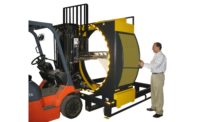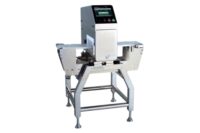These are the types of headlines that will cause processors and retailers of red meat, pork, poultry and seafood products to wake up in a cold sweat:
- “[Processor] Recalls Chicken Nugget Products Due to Possible Foreign Matter Contamination”
- “Company Recalls Smoked Pink Salmon Because of Possible Health Risk”
- “[Provider] Recalls Chicken Products Due To Misbranding and Undeclared Allergens”
Lest you think these incidents are rare, all three of these recall announcements were released during one three-day period in early March of this year.
They serve to underline the simple fact that while processors and retailers of proteins take every precaution possible to ensure that their operations obey the “Three ‘C’s’ of Food Handling”—Keep it Clean, Cold and Covered—it is extremely difficult to do on a consistent basis and requires constant vigilance. That’s where the developers, manufacturers and suppliers of absorbent pads and foam trays that are used to package fresh proteins step in to lend a hand.
It is extremely important to have untainted fresh red meat, pork, poultry and seafood make its way to grocery and supermarket display cases. With that in mind, the leading providers of the absorbent pads and foam trays that are used to package these proteins work each and every day to develop innovative packaging materials. These innovations are designed to help guarantee that processors and retailers are always offering their customers products that are safe and appealing.
In recent years, a number of advancements have been made in pad and tray design that help them become even more reliable components in the fresh-protein supply chain. Here’s a closer look at two of the more significant ones:
• CO2-Generating Pads: In basic scientific terms, CO2 is detrimental to bacteria because it helps create an environment that is unfavorable to bacterial growth. More specifically, when CO2 is exposed to a meat surface it is turned into an acid that creates a lower pH level on the meat, which helps slow bacterial growth. The CO2-generating pad is constructed of a non-permeable/non-stick polyethylene film and hydrophilic non-woven bottom layer that is filled with an FDA-approved granular element that is a combination of citric acid and sodium bicarbonate. This granular element creates CO2 when the citric acid and sodium bicarbonate are combined and contacted by the protein’s juices.
• Modified Atmosphere Packaging (MAP): When processors use MAP, the packaging container is injected with an air mixture that is 80% oxygen, which helps keep red meat red, and 20% CO2, which, as mentioned, will help slow bacterial and microbial growth. By comparison, the air we breathe contains approximately 78% nitrogen, 21% oxygen and only 0.04% of CO2. MAP is most commonly utilized by food processors that have access to barrier foam trays that are coated with a co-extruded barrier film that creates an exceptionally high oxygen barrier, as well as a barrier lidstock that is hermetically sealed to the tray, which keeps the oxygen- and CO2-rich air in the package where it can interact with the protein.
Constant vigilance helps fresh-food processors and retailers keep their products visually appealing and safe for consumption. However, there are a number of next-generation packaging tools that they can utilize to meet these demands. CO2-generating pads and MAP are two that help take food-packaging safety and reliability to the next level, while also reducing the chance that negative headlines are written. NP
Novipax is a producer of absorbent pads and expanded polystyrene foam trays. For more information, call (630) 686-2735 or visit www.novipax.com.





Report Abusive Comment